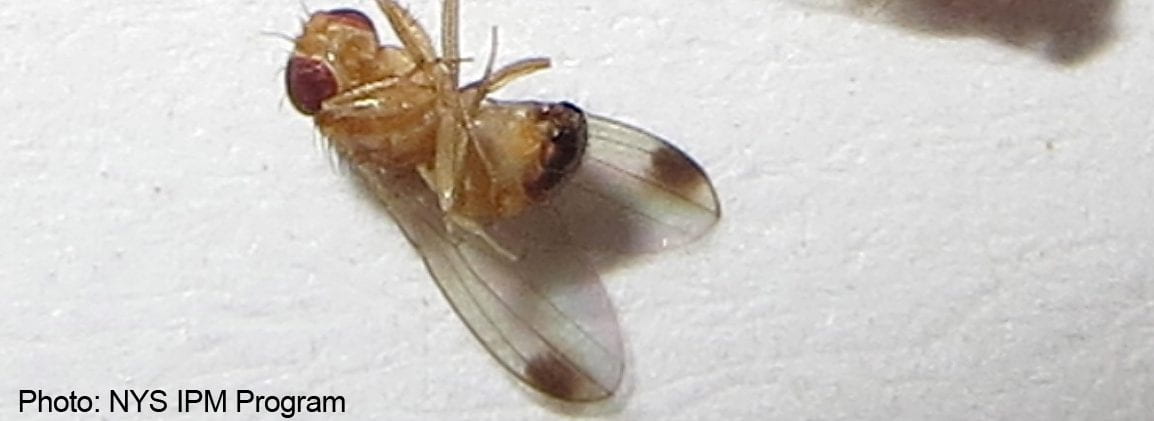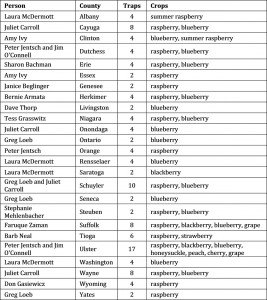Two female and 1 male SWD were caught on June 23, 2016 in traps set in a summer and fall raspberry planting in Ulster County. Traps at this site are being monitored by Jim O'Connell, Ulster County Cornell Cooperative Extension and Eastern NY Commercial Horticulture Program.
 Because summer raspberry was ripening at this site, 25 fruit were examined for the presence of egg laying. Only one egg was found in one of the 25 fruit. This indicates that there is a low level of fruit infestation in the summer raspberry crop.
Because summer raspberry was ripening at this site, 25 fruit were examined for the presence of egg laying. Only one egg was found in one of the 25 fruit. This indicates that there is a low level of fruit infestation in the summer raspberry crop.
If summer raspberry are ripe or ripening, it may be prudent to begin a management program for SWD. This year, due to the early arrival of SWD in New York, it is likely that summer raspberry will be vulnerable to fruit infestation. More information on SWD management is available on the Cornell Fruit Resources SWD page.




